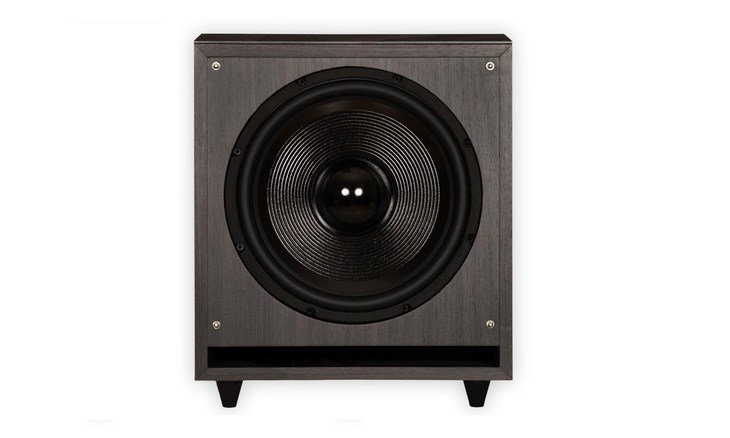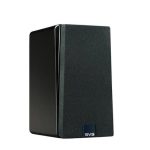Probably, your car sound system is not delivering the kind of bass output you want. In this case, it’ll help to upgrade the sound system by adding a car subwoofer. However, a top-quality car subwoofer may be a huge investment for many people. Your budget may not allow you to buy one at the moment. Luckily enough, if you have an extra home theatre subwoofer, you can use it in your car stereo and save money.
However, home subwoofers differ from car subwoofers. Thus, using a home theatre subwoofer in a car requires some modifications. In this article, you’ll learn more about the differences between these two kinds of subwoofers, how to convert your home subwoofer for use in a car, and whether it’s a good idea to use a home theater subwoofer in a car.
Home Subwoofer vs. Car Subwoofer
To understand whether it’s a good idea to use your home sub in your car, it’ll help to start with discussing the differences between home and car subwoofers.
Home subwoofers and car subwoofers are mainly different in terms of how they’re powered. Essentially, home subwoofers are powered by alternating current (AC) from the mains power while car subwoofers are powered by direct current (DC) from the car battery. Thus, a home subwoofer is powered by a voltage of about 120 volts AC or 220 volts AC depending on AC voltage standards in different locations. A standard car battery delivers 12 volts DC. This means you can’t power a home subwoofer directly with a car battery. That’s where conversion comes in as it will be discussed later in this article.
Another key difference between home and car subwoofers is that home subwoofers are typically active subwoofers while car subwoofers are passive subwoofers. This means that home subwoofers have an inbuilt amplifier while car subwoofers are connected to an external car amplifier. Thus, home subwoofers allow for an easier setup than car subwoofers since fewer components are needed when installing home subs.
The efficiency between home hubs and car subs also differs. For instance, home subs require little wattage to power themselves and deliver loud bass output. On the contrary, car subs typically require more power to deliver loud bass output. The idea behind this design is that home subs have to deliver a sound output that can cover a large space, unlike car subs that cover a smaller space. Also, when comparing car audio vs home audio systems, you’ll notice that car audio systems are generally smaller than home audio systems.
How to Convert a Home Subwoofer for Use in Your Car
Considering the differences between home subwoofers and car subwoofers, you cannot use a home subwoofer in your car without doing some important conversions. Here’s how to convert your home subwoofer for use as a car subwoofer:
Step #1- Get the right car amplifier
Since a home subwoofer is designed as an active subwoofer, it comes with an inbuilt amplifier that’s powered by 120 or 240 volts AC. Thus, you cannot use it in your car as it can’t work with 12 volts of DC. Although you can buy a DC to AC voltage inverter, such a setup won’t be very efficient. Thus, you should get a car amplifier that can work with the wattage of the home subwoofer driver. If you already have a car amplifier that can power the subwoofer, then you’re good to go. If not, you’ll need to buy a car amplifier. You can choose between installing a dedicated car amplifier for the subwoofer or using the existing car amplifier.
Step #2- Get rid of the electronics in the home subwoofer
Since a home subwoofer comes as an active subwoofer, it contains several electronics built inside the subwoofer box. These electronics include a transformer, circuit board, and amplifier among other electronics. You won’t need these electronics. What you only need is the subwoofer enclosure and the subwoofer driver. Thus, you should get rid of all the unwanted components.
To remove the unwanted electronics, get into the subwoofer box by removing the screws behind the subwoofer box. Remove the assembly from the subwoofer box. Cut off the speaker wires connected to the subwoofer driver. Also, remove the power cord.
Step #3- Wire the subwoofer to the car amplifier
Before wiring the subwoofer to the car amp, check the subwoofer driver to determine the number of voice coils driving it. If it has one voice coil, then it has two speaker wire terminals. If it has two voice coils, then it should have four speaker wire terminals. Also, keep your car engine turned off before doing any wiring.
Choose the installation location for the subwoofer in your car. Next, wire the subwoofer to the amplifier. If the subwoofer has a single voice coil, connect the positive terminal of the subwoofer to the positive terminal of the amplifier channel. Next, connect the negative terminal of the subwoofer to the negative terminal of the amplifier’s second channel.
If the subwoofer has two voice coils, wire it the same way but ensure the speaker wire runs from the amplifier to the outer set of subwoofer terminals. Then use a jumper wire to connect the two inner subwoofer terminals together.
Step #4- Test the connection
Ensure the amplifier is connected to the head unit. Turn on your car to turn on the receiver and amplifier. Play some music and enjoy using your home subwoofer in the car.
Can I Use Home Speakers In My Car?
If you’re wondering whether you can use home speakers in your car, it’s possible to do so. Just ensure you don’t overpower them with your car amplifier. However, home speakers aren’t designed to withstand extreme conditions in a car such as a temperature, humidity, ultraviolet exposure, and vibrations like car speakers. Thus, they’re not a reliable long-term solution. Although they might save the situation for a while, you’ll ultimately need to buy car speakers.
Conclusion
As you can see, it’s a good idea to use a home subwoofer in the car. Although these subwoofers have certain differences, you can easily convert a home subwoofer for use in your car. The conversion and installation process will only require you to save a few hours of your time. Ultimately, you’ll enjoy improved bass output in your car for an improved car music listening experience.
Michael Evanchuk is a San Francisco-based sound engineer with 20 years’ experience installing, troubleshooting, and repairing commercial, automotive, and household sound equipment. Evanchuk owns an auto stereo center, where he offers highly competitive car audio installation and repair services. He has written dozens of articles on different sound engineering topics, all of which have been published in leading journals, blogs, and websites.





